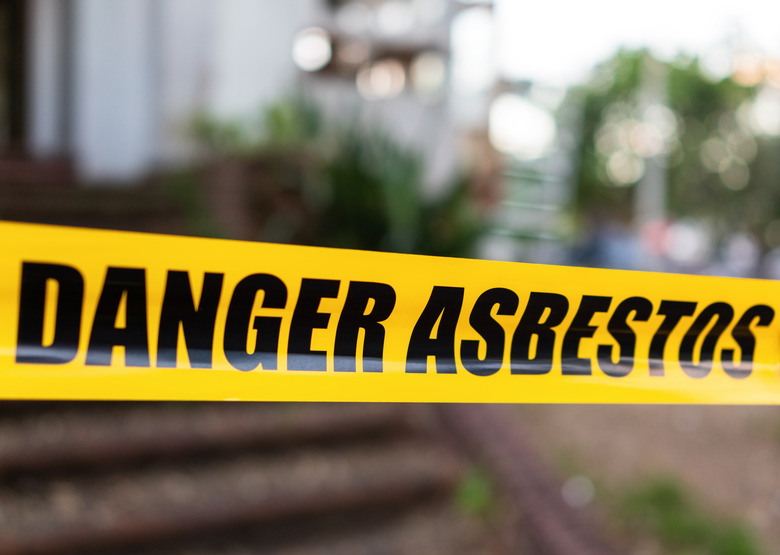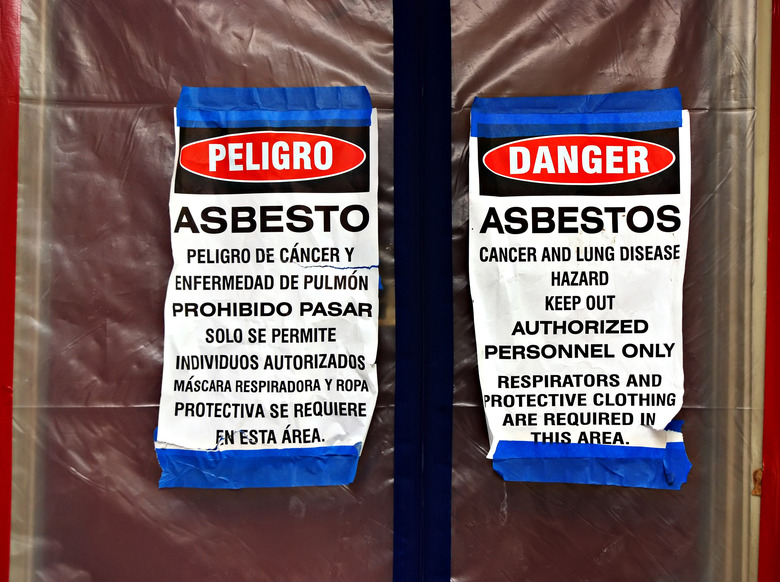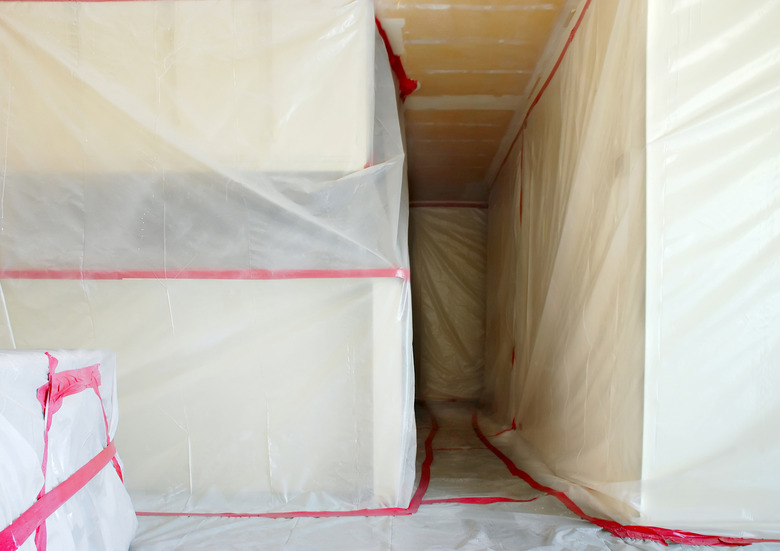A Homeowner's Guide To Hiring Asbestos Abatement Professionals
The presence of asbestos in the home isn't necessarily cause for alarm — when asbestos is left undisturbed in good condition, it is not really a danger. But when asbestos-containing materials are damaged or moved, they can emit microscopic fibers that can cause a multitude of health problems, including lung cancer, mesothelioma and the lung disease asbestosis. This is why homeowners should never attempt asbestos abatement procedures themselves, including the removal of what's known as presumed asbestos-containing materials, or materials that are likely to contain asbestos, such as some decorative ceiling finishes installed before 1980.
Instead, building owners should contract an asbestos abatement company when they want to remove even a small amount of suspect materials from their home. Asbestos abatement contractors are specially trained and certified in handling these dangerous building materials, including the removal, decontamination and disposal of dangerous asbestos waste.
Types of Asbestos Professionals
Types of Asbestos Professionals
There are two main types of professionals who work with asbestos materials: inspectors and contractors. When it comes to contractors, not all companies are equal, and some specialize in only asbestos abatement, while others work exclusively with disposing of these materials. (Some asbestos-containing debris is considered hazardous waste and can't be thrown in landfills).
While it may be tempting to hire someone to test your home for asbestos and also remove the material, it is best to avoid conflicts of interest. Hire an independent asbestos inspector to test samples to discover whether the material is in your home and to provide advice on how to deal with asbestos-containing materials. Sometimes, the best option is to encapsulate the materials so they cannot shed their fibers and then leave them alone.
When you need professional asbestos abatement or mitigation work, hire another company and have it complete the work entirely before bringing back the original inspector to verify the work was done properly and confirm that there is no increase in the number of asbestos fibers present in your home. Working with an inspector that is not associated with a contractor helps to ensure impartiality. An independent inspector will not be pressured to claim you need unnecessary abatement work or to certify that a job has been completed satisfactorily regardless of the quality of the contractor's actual work.
Generally speaking, an independent asbestos inspector will cost around $400 to $600, and you'll likely need to pay an additional lab fee of $25 to $50 to test each sample. If your home has asbestos, full home abatement services throughout your home can cost around $20,000 to $30,000, but most smaller projects average around $2,000.
About Asbestos Certifications
About Asbestos Certifications
It's worth noting that there are no federal laws regarding the training or certification of asbestos inspection, repair or removal professionals, though many states and even some municipalities do regulate these matters. Even though there may be no federal law requiring the accreditation of contractors, there are still federal and state certifications available for those working in these fields. You should always insist on working with a certified contractor for the health and safety of yourself and your family. Both the Occupational Safety and Health Administration (OSHA) and the Environmental Protection Agency (EPA) have training courses and licenses for asbestos removal professionals, but a handful of states have waivers to administer their own certifications and training based on these programs.
Classes of Asbestos Abatement
Classes of Asbestos Abatement
There are four classes of asbestos work as defined by OSHA. Class I work is the most difficult type of asbestos material removal and requires the most training when it comes to the removal of asbestos materials since it involves removing things like thermal system insulation, such as pipe insulation, or surfacing materials that were sprayed or troweled on, like a popcorn ceiling. Class II work is less involved and includes the removal of all other asbestos-containing materials, such as roofing or floor tiles. Class III involves the repair and maintenance of materials with asbestos in them.
Class IV work is the most important and most challenging aspect of working with asbestos, and it requires the most training. No matter what other class of work is being done in your home and whether it involves asbestos abatement or mitigation, class IV work must also be done since it involves the maintenance and cleanup of the work area, including the cleanup of dust that may contain asbestos fibers and the safe disposal of asbestos waste. Anyone who works in any type of asbestos handling needs to be trained in class IV in order to safely minimize the spreading of asbestos fibers.
As you might imagine, the more involved the work, the more expensive the project will be, so class I work will typically cost more than class III work involving the same amount of materials. Of course, the greater the amount of material that needs to be removed, the more the project will cost, so while class II projects aren't quite as difficult as class I overall, a small project involving the removal of asbestos along one pipe will typically cost a lot less than the removal of a wall-to-wall tile floor.
How to Hire a Contractor
How to Hire a Contractor
Remember that when you hire someone to remove asbestos from your home, you're trusting them to not only extract the materials but also to keep asbestos fibers out of your home. If you hire a shoddy contractor, you're putting your family at risk of asbestos exposure, so take your time finding a skilled, reputable company and be willing to spend more for quality service. That being said, it is always a good idea to shop around and get estimates from at least three companies so you can get a good idea of what the project will encompass and the total cost. You can then choose a trustworthy contractor with a fair price. If one company has dramatically lower prices than the others, consider that to be a red flag.
When searching for contractors, check with your state licensing board to find asbestos removal experts. Before hiring, ask to see a contractor's license, insurance certificates and documentation proving that the contractor is properly certified to work with asbestos as required in your state. Verify that the business will have an on-site supervisor with his own federal or state training certificate.
Ask the contractor for details on the asbestos materials removal process, how they dispose of the materials and how cleanup is performed after the removal. Be sure to ask any questions you may have and be wary of anyone who tries to skirt or ignore these questions.
After You’ve Picked a Contractor
After You've Picked a Contractor
When you do find someone with whom you want to work, get a written contract that details how the job will be completed, including the cleanup process and the applicable federal regulations that must be followed. Most legitimate companies specializing in this work should have a template contract that contains this information. Also request a project schedule to give you some idea of how long things will take.
As the work is being done, make sure workers use plastic sheeting and duct tape to seal off the room (including the HVAC vents) in order to keep asbestos dust from spreading into the rest of your home. This area should be properly marked off, and no one from your household, including pets, should be able to enter the area until the project has been completed. Watch to see that the workers do not track dust outside of the enclosed area on their clothing or shoes. Workers should wet all materials with a hand sprayer before removal since wet fibers do not enter the air as easily as dry ones, making them easier to clean up.
Contractors should dispose of all materials, including contaminated disposable clothing and respirators in sealed containers or heavy-duty plastic bags that have been properly labeled. Debris should never be broken into smaller pieces, which could release additional asbestos fibers. The work area should be left free of debris and dust. When the workers are done at the end of the day, they should clean with wet mops, rags and sponges or vacuums fitted with high-efficiency particulate air filters.
After the work has been completed, you should get a written statement from the contractor saying that all procedures were properly followed. At this point, have an independent inspector review the work, making sure to test the air to ensure there is no increase of asbestos fibers. This can confirm whether or not the contractor did the work properly.
References
- California Department of Consumer Affairs Contractors State Licenese Board: A Consumer's Guide to Asbestos
- Asbestos.com: Your Guide to Hiring an Asbestos Abatement Company
- United States Environmental Protection Agency: Protect Your Family From Exposures to Asbestos
- Occupational Safety and Health Administration: Toxic and Hazardous Substances, Asbestos
- United States Environmental Protection Agency: Should You Have the Air Ducts in Your Home Cleaned?


